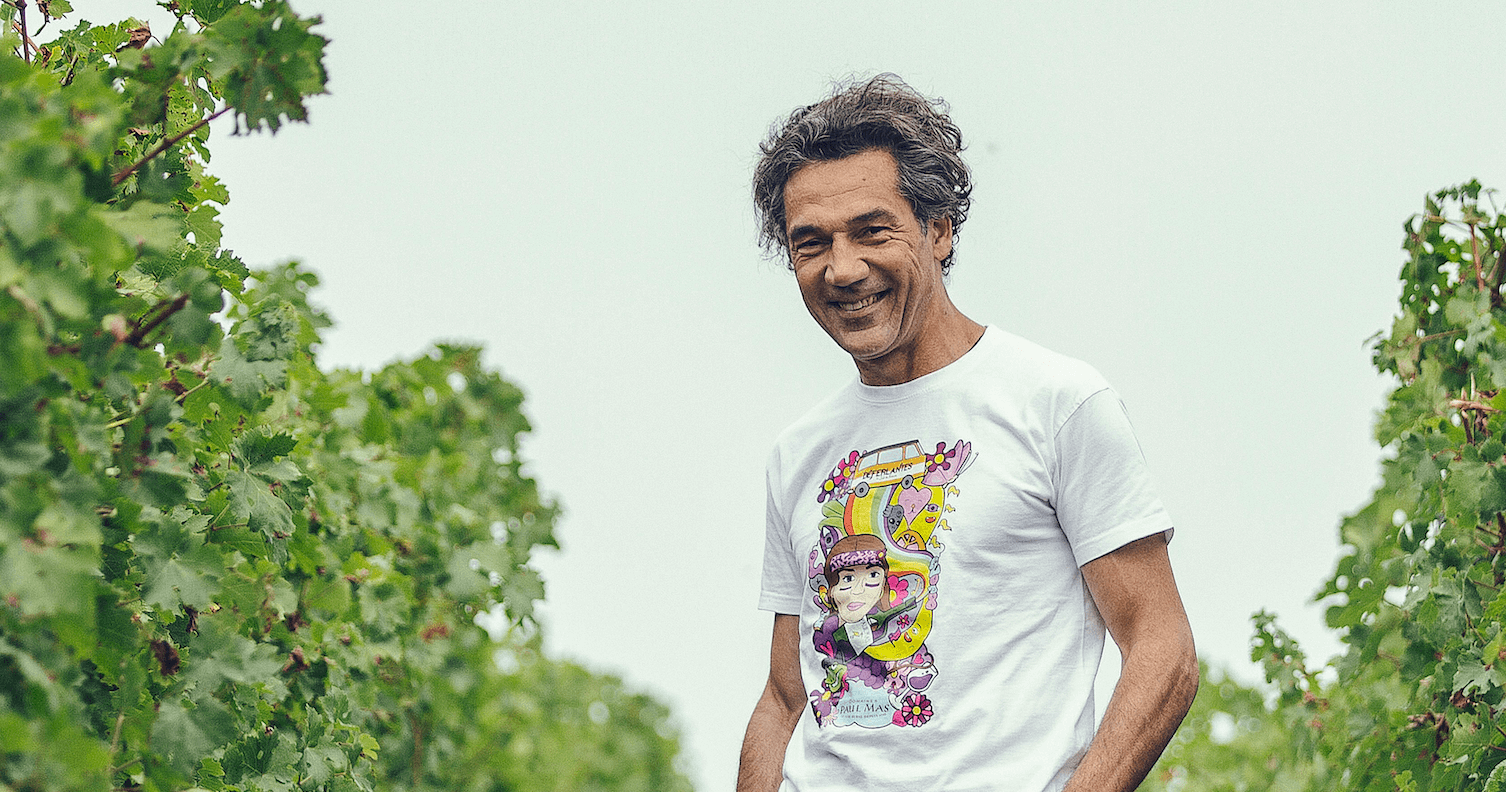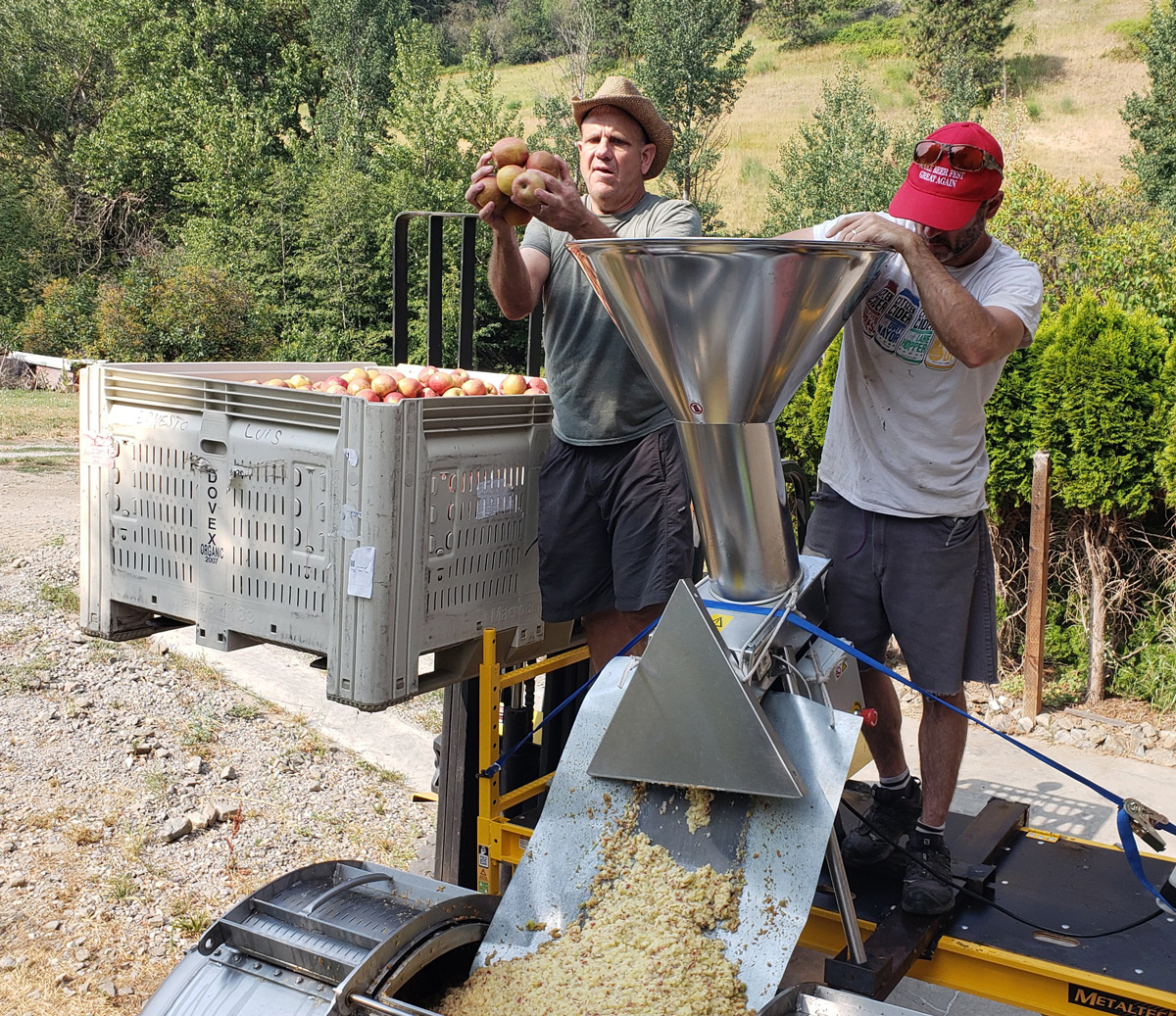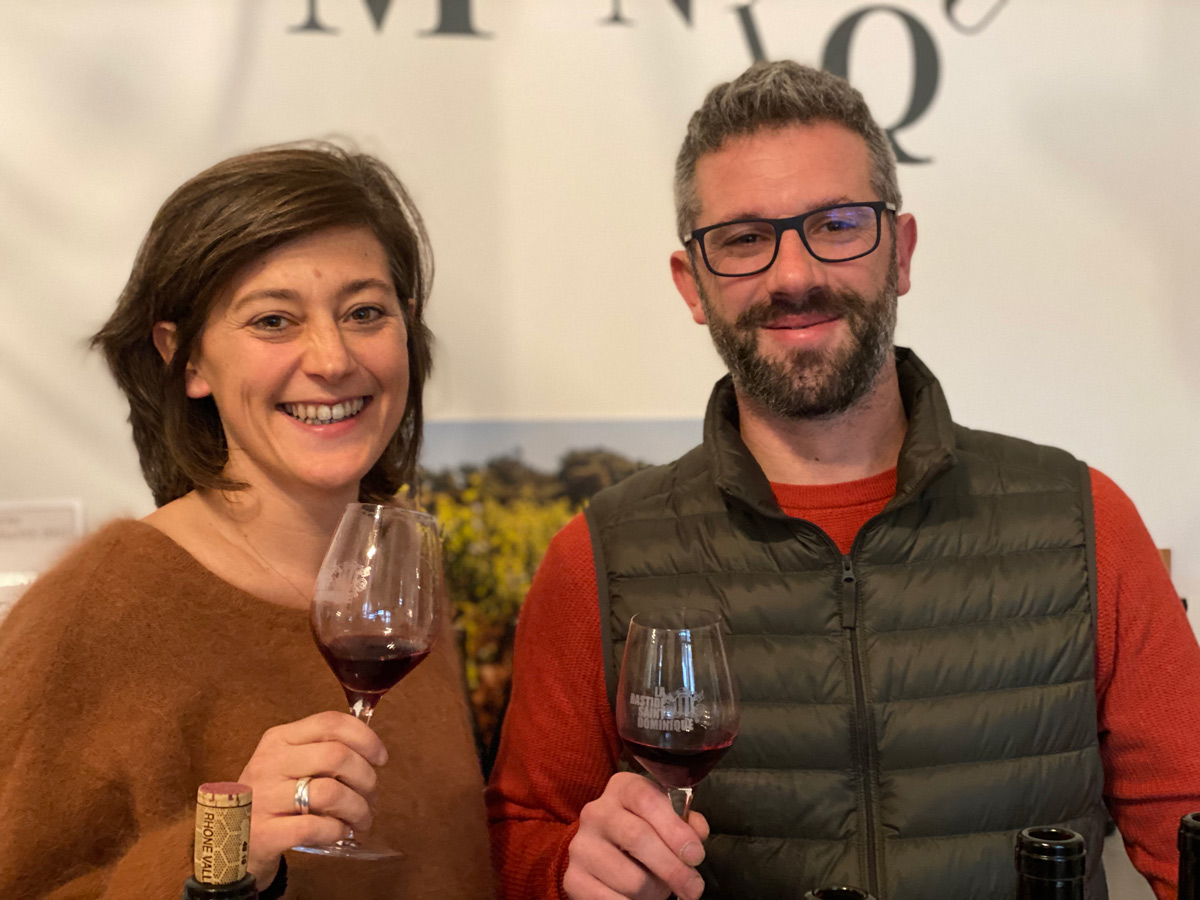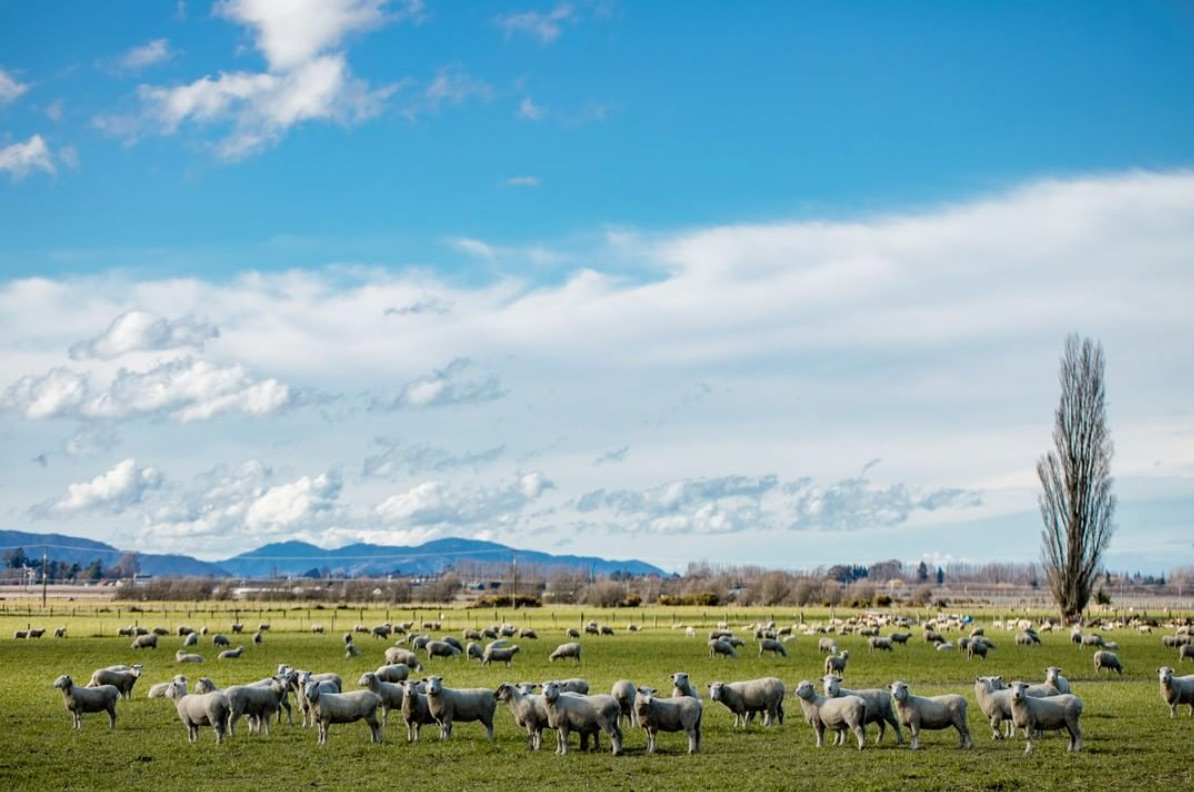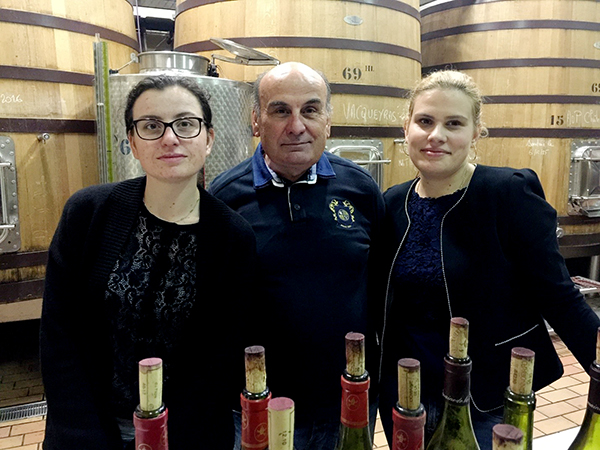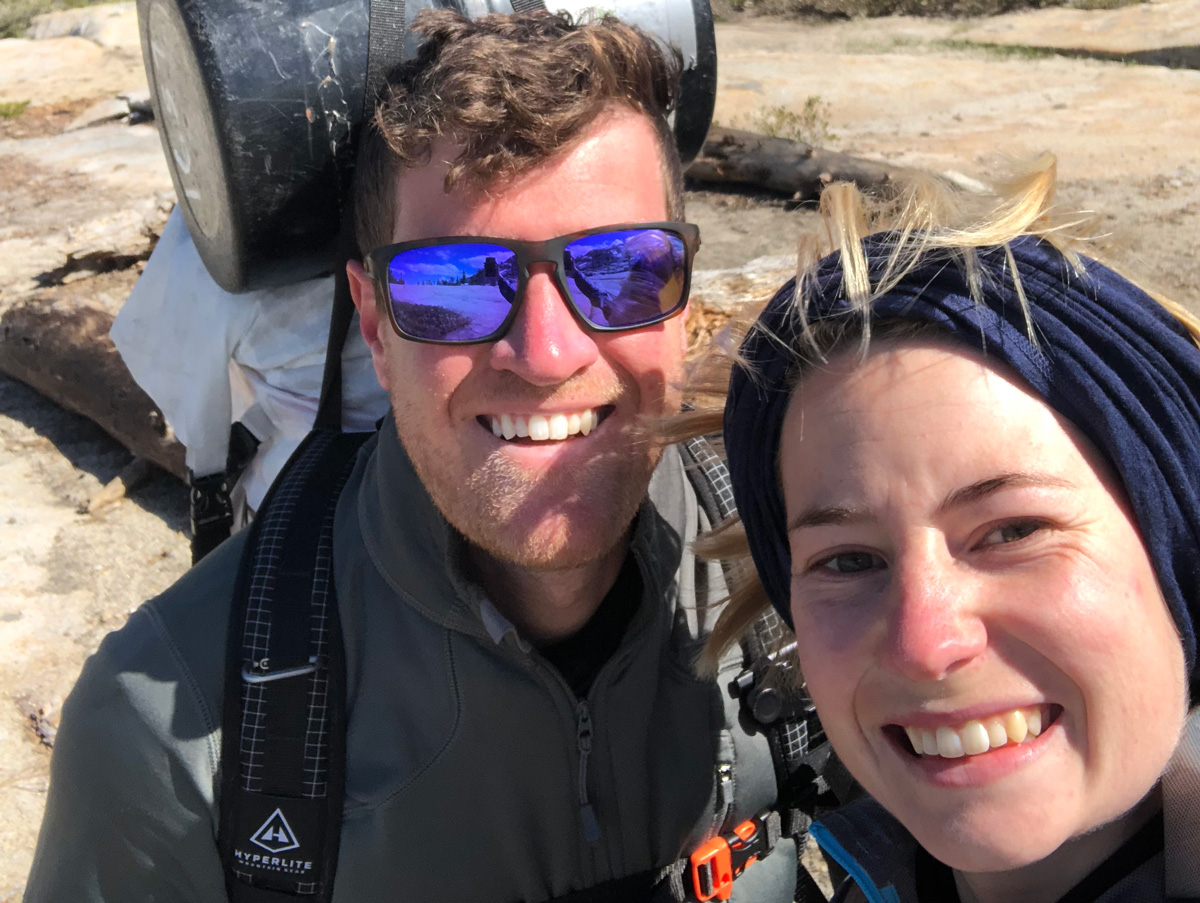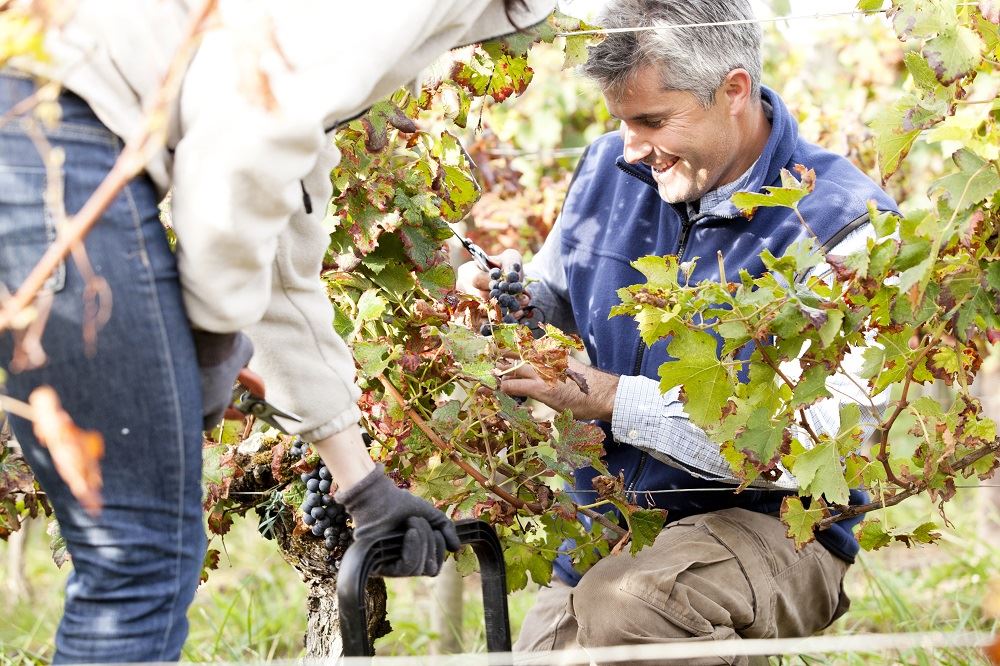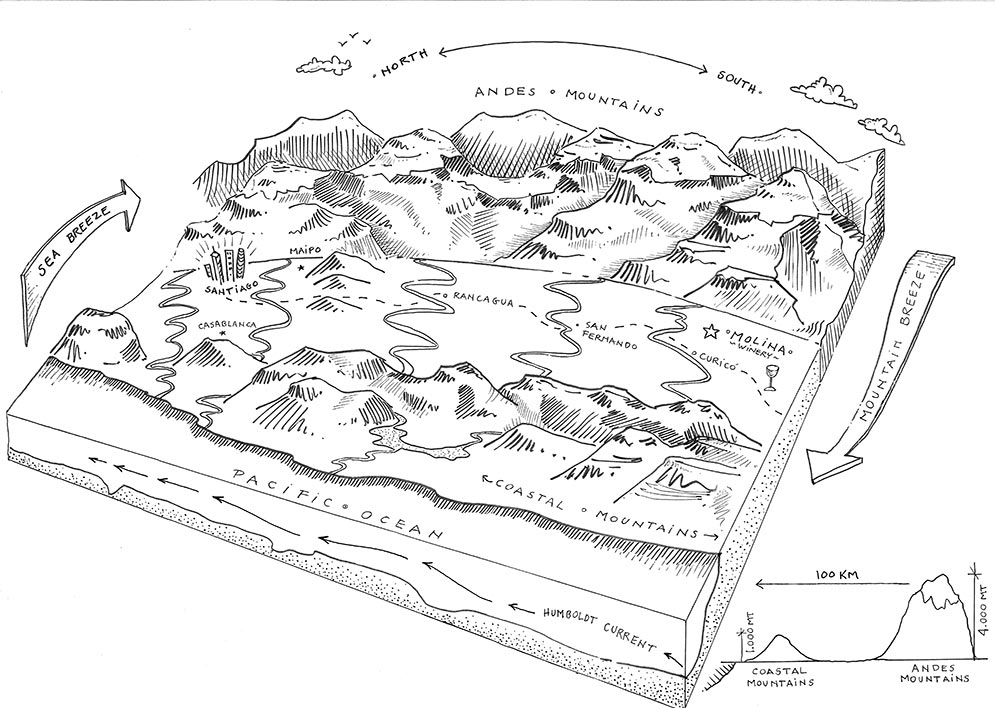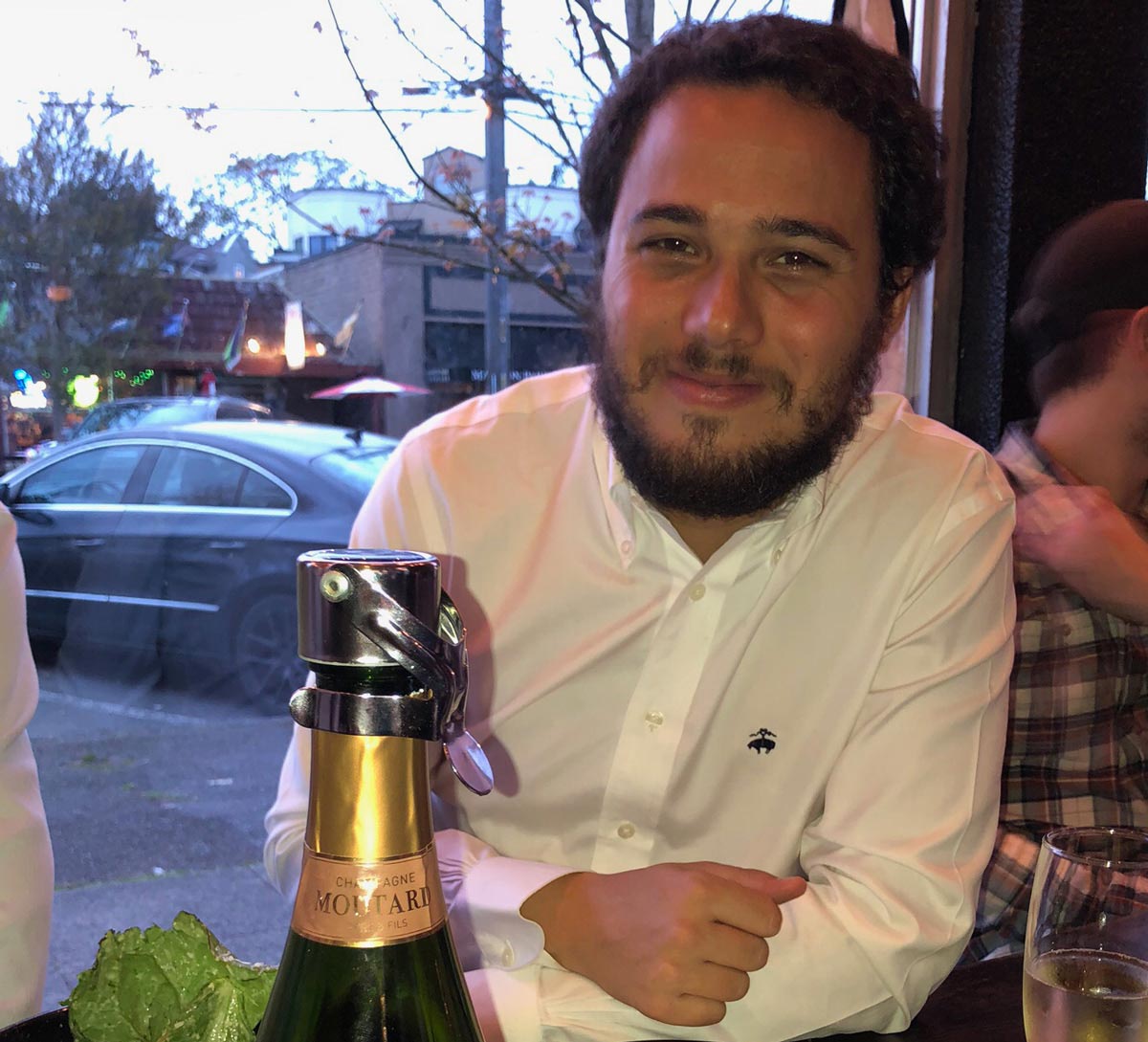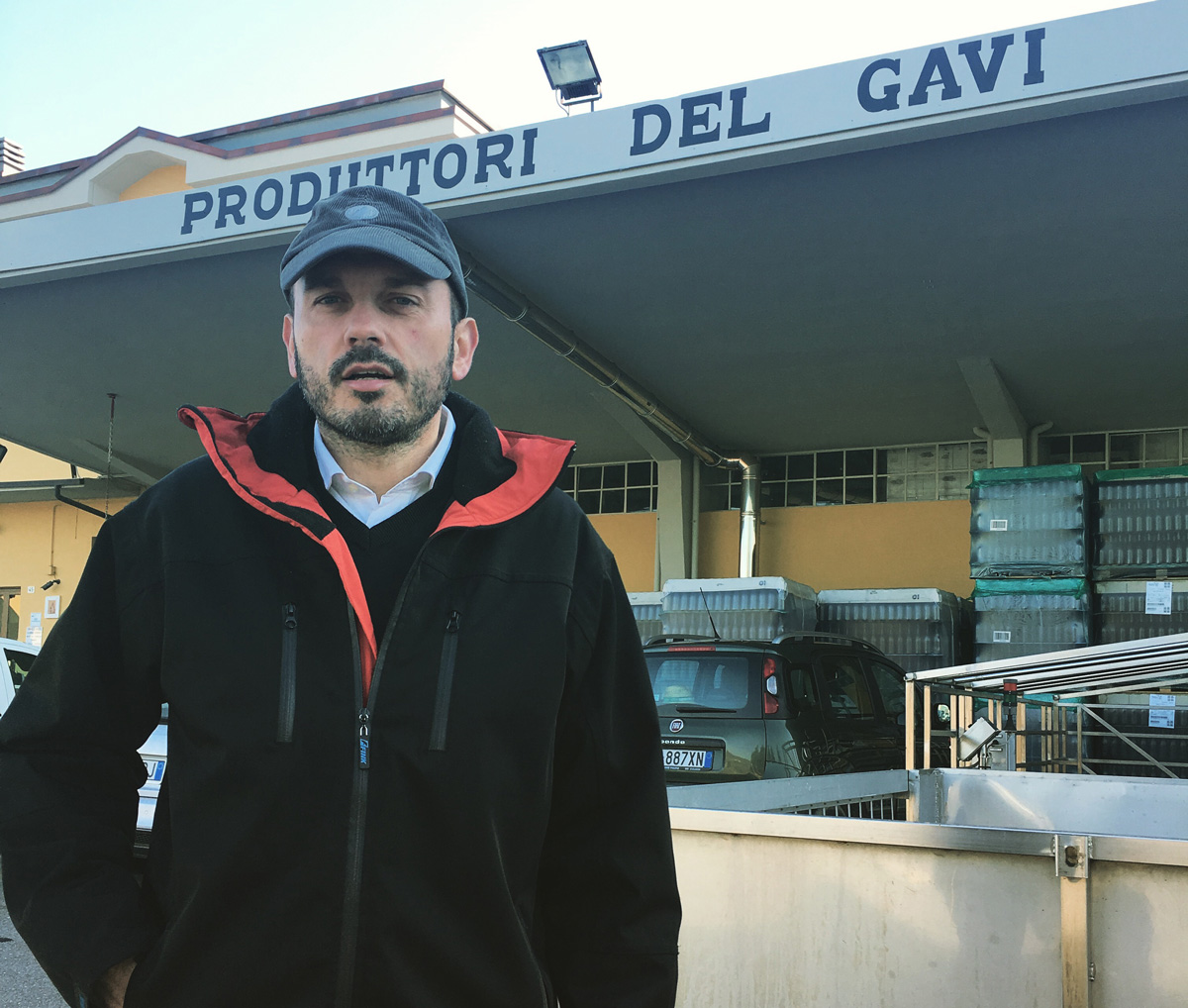We are pumped to distribute this iconic Rheinhessen producer in the Pacific Northwest! Our friends at David Bowler Wine sent sixth-generation winegrower Johannes Hasselbach our way to help get things started, and Johannes sits down with John to cover the bases on all things Gunderloch.
Click here for the episode link on Spotify, and here for the episode link on iTunes.
…and a full transcript is below if you still use AOL and don’t enjoy the convenience of passive audio!!!
JG: Hello and welcome back to another episode of Grape; Unfined, Unfiltered. I’m your host, John Griffin and today we’ll be speaking with Johannes Hasselbach of the historic Rheinhessen producer Weingut Gunderloch. I recently caught up with Johannes at the Ace Hotel in Seattle where we spoke about changing times, soils, Australian Riesling, and local beer. All right, let’s get to it.
JG: So Johannes, welcome.
JH: Thank You.
JG: Glad you could make it. How are you doing today? How was your, how was your day out in the market today?
JH: Pretty awesome I have to say. Some good customers you have here. Some really interested, uh, wine geeks and a lot of places for good German Riesling I would say, so that’s good.
JG: Nice. This is your first time here or…
JH: It’s my first time working here. I have friends in the area, so I was here privately, uh, 10 years ago. It’s a long time, but now I’m actually on business. Sounds strange, but it is like, it is.
JG: Well, you know what? Welcome to town.
JH: Thank you.
JG: So let’s see, let’s start off. So Weingut Gunderloch. Okay, so what’s the difference between your last name, ? Hasselbach and Gunderloch. Where does the difference in name come from, I don’t know.
JH: So we are, we are family business even though sometimes people think I’m like the sales representative or something because I have a different name. But actually since six generations, my family is running the estate at home in Nackenheim. But as it seems we have some gene defect or something because we only have girls as children. I’m actually the only, the first male person to take over the winery.
JG: Really?
JH: So every generation, the um, yeah, the name is changing and I have two kids at home, uh, two girls. My mother has nine grandchild’s, eight of them are girls. So it seems to continue this way. So the next generation you have to accustom yourself to a different name again.
JG: Wow, that’s, that’s, that’s incredible. Well you can always try for another child?
JH: Yeah, we’ll see.
JG: So you started touching on the history of the winery in general. So you’re saying right now you’re in your sixth generation. Who started the whole mess, who started it?
JH: So who got me into trouble, you mean?
JG: Exactly.
JH: Okay. Yeah. That was my great, great, great grandfather, Carl Gunderlochoffer, that’s a good German name, a very wealthy banker. He had a bank house called Gunderloch in Mainz in my, in a city next to my hometown. Um, for some reason he seemed to get bored of money and so he started to become a winemaker and made my life a little bit more interesting. Sometimes it would be nice to have a bank house in the back as well. But now it’s uh, yeah, it’s a different, different business. It’s a agricultural business that I’m in and it’s extremely interesting. But he had the vision to select land to make wine on that actually nobody wanted to have at this time. So he picked very steep slopes on very rocky soil. So that means we have to invest a lot of work power into that and you don’t have as many grapes as the other guys at the flatter part of the area. So people thought he was a bit crazy maybe.
JG: So at the time people were thinking more quantity versus quality.
JH: Yeah, but on the other hand, as a small family business as we are, you cannot compete with the big guys. Just like trying to be more efficient, trying to be faster, trying to be more on the cost side. As a family, as I understand it, you have to get experience with a piece of land and try to extract the uniqueness of this piece of land for that Riesling is the perfect tool for that is what we’ve been doing for the last six generation. I think my great, great, great grandfather was right picking this special spot for growing grapes.
JG: Wow, that’s cool. So are you doing other crops besides grapes?
JH: No, well, we have some chickens at home and we have some, some vegetables, but that’s it. Like I’m, I’m a winemaker.
JG: You’re sticking with the grapes?
JH: I am, that’s what I can.
JG: Oh that’s good. Sounds good. Tomatoes in the summertime. Grapes the rest of the time. Yeah. And your background. So if I remember correctly, you have been basically working with the winery now for what, 10 years?
New Speaker: No, not as long.
JG: I mean did you grow up in the cellar as a little kid, like running around, getting in trouble and having your father yell at you?
JH: Yeah, picking grapes, getting yelled at and uh, throwing the ball in the press and stuff like that. Yep. That happened. Um, but I grew up on the winery. Um, my life plan was maybe a little bit different than what it ended up. I studied accounting at university. My sister was planned to be the winemaker, at out estate and for some reason she fell in love with a crazy Austrian winemaker, so she took happily off to Austria, making now wine there and that opened up the door for me, come back, uh, and continue the family business, so..
JG: Winemaking or accounting? Let me think about that for a second.
JH: It’s like the one thing that brings you into winemaking they say is if you like hard work and if you’re not good at math, that qualifies you as the winemaker.
JG: Or if you start off with a lot of money.
JH: Yeah. Right. So no, actually it’s like the first step into the winery was continuing the family business, my responsibility for what my generations before me created, but now getting experience working there again, understanding much more, tasting much more that really feeds the fun and really creates joy doing the work. When I was, uh, when I was young, I didn’t like work, it was too exhausting for me.
JG: I hear you.
JH: But now it’s a bit different. I really enjoy doing the physical labor. It’s a nice mix. If you sit on the tractor, you work in the vineyards, you go to Seattle, sell some wine, you meet customers. It’s amazing. It’s a great chance that I have. And it takes some time until you see the complete picture of it.
JG: But you grew up in the whole environment, so it’s not like your family was doing something completely different. Uh, running a retail store or something and then all of a sudden you decided to become a winemaker or to join the wine business. It was culturally in your family’s blood.
JH: Pretty much. It’s, it’s in our blood. Somehow, it’s in our genes and, and uh, when I’m away from the winery, uh, for four or five days, I start to miss the vineyards and I want to get back home. So it’s really nice. I didn’t, I wouldn’t have thought that it would happen this way because when I was young I really wanted to get out of the village. I wanted to go see the world and leave the small village of Nackenheim behind. Now it’s a complete different thing. I really enjoy living there and raising my family in the small village. Uh, yeah, it’s uh, it just changed everything.
JG: Yeah. You appreciate it.
JH: Yeah, definitely.
JG: Do you have… How many kids?
JH: I have two kids now.
JG: Two kids.
JH: Two girls, of course, as it is in our genes.
JG: Dog? Cat?
JH: A cat. A cat and some chickens.
JG: No dog!? Wow.
JH: We had dogs in our winery, every generation, but for some reason I ended up with a cat.
JG: Cats are easier to work with. Um, so when did you actually start working with the winery full time? So you were doing accounting a little bit.
JH: Yup. Did a one year trip around the world.
JG: Woe…
JH: Just to get some experience and didn’t feel like starting working right away after university. So I took my girlfriend at the time, now she’s my wife and the mother of my kids. We went around the world including a six week sailing trip around Vancouver Island, which was pretty amazing.
JG: Wait a minute.
JH: And then I started to come back home. Um, vintage 2013 was the first year where I took over the control of the cellar at home and then 2016 I inherited the winery from my parents. So it’s like, it’s a very historical estate with a rich history of over 130 years. But on the other hand, our team at home is very young and dynamic. We are really open to question and redefine what we are doing there and like that we are not falling asleep because we are a historical winery. I think we have to, especially as we see it right now, the weather patterns are changing tremendously in Germany. We see much different seasons than we have seen before. The vineyards react completely different to that and so the wine making is changing big time as well. So everything that my, the generations before us learned, experienced it, it’s not wrong, but it has to be questioned. Like, for example, just in the last generation of my parents between maybe 1970s and now everything changed like from grapes didn’t really get right because it was too cold to the question is it still cold enough for Riesling in our area? Um, I think that is like the question cannot be answered with yes or no, but I think there’s a lot of things that we actually can do to support our vineyards in extreme conditions and climate change and luckily and quite interestingly, we see that in the last series of very warm vintages, the wine actually maintain the elegancy, maintain their freshness and that has a lot to do with rethinking, winemaking completely like practices in the vineyards, practices in the cellar. Everything is now in question and we are trying to find the perfect way of helping our vineyards and guiding the wine in the cellar without influencing it too much. But believing inside what we are always have been doing and trying to extract the style that resembles the soil, the climate, everything. And that’s what Riesling is made for basically. Yeah.
JG: Okay. So you were working with your father for, I don’t how many years, when you started trying to, you know, maybe implement some changes or some new ideas like, hey look, the climate’s changing, we’re having warmer vintages, you know, and you’re trying to get your father to like, oh, except those ideas. Was it a battle?
JH: Um, it wasn’t a battle, but they were interesting times to say like this. So of course my, my father was a brilliant winemaker. He had a lot of experience and he produced wines that really are standing out. He knew exactly what he wanted and then all of a sudden a young guy comes around and tries to do everything different without any experience. There were some interesting discussions at the dinner table at home, but at the end we are reunited by the belief that we have to work for our vineyards. So that was what is always the same between the six generations making wine in our family, we always believed in the vineyards and so we have to do everything in their favor. And so I did a lot of experiments alongside working with my father, so I was working maybe like two or three seasons together with him. Then unfortunately he got sick and could not work in the cellar anymore. Um, and and this two, three years, I did a lot of experiments. I listened a lot to what my father told me. And I think somewhere there’s a mix between the two sides, like trying new stuff, but also soaking up the experience that at the end it’s a puzzle play. Like everything is a small piece of the puzzle. I’m not saying I have solved the puzzle yet. I’m still looking for some pieces.
JG: It’s a moving puzzle.
JH: Yeah, definitely and every experience can be a part of the of this. And I think that’s how it will hopefully continue for the next 30 years when I will make wine in our estate is that every season, every year gives us new challenges, new question marks, new ideas. And, and because I think as a winemaker you cannot believe that you will invent a cooking recipe for making wine. It’s not like a formula.
JG: For the next 50 years, it’s going to be like so. It doesn’t work that way. I mean that’s the thing. I would imagine that your father was probably thinking like, you know what? I have a lot of experience, I’ve seen changes myself, and the changes that he was seeing while you were working with him. You know what? He’s probably thinking like, yeah, this is good for the future, you know?
JH: Yeah. And as I said, it’s a mix between traditional delivery of knowledge and then I’also new ideas and yeah, that you take into, into the big picture of making wine.
JG: Wouldn’t it be fun to meet your great, great, great, great. I don’t know how many greats, grandfather and have a bottle of his wine with a bottle of today’s wine and see the difference and see the expressions, like that would be super fun.
JH: Yeah and I think a lot of these things are actually coming back to us. So we had a quite industrial phase in the last generation because the knowledge exploded basically. The knowledge that we know about wine, but it doesn’t mean that everything that has been discovered is useful for us because I think there’s much more interesting ideas and things that my great, great, great grandparents did before they had the knowledge, but they developed a kind of feeling. They looked at the vineyards, they looked at the grapes and that told them what they needed to do. So they had a different approach to winemaking, which is much less technical than sometimes we do it these days. And I think also there is a really cool mix to, it’s good to know what can go wrong, but that doesn’t mean that you really have to do everything to avoid it because that would also exclude a lot of this unexplainable stuff of winemaking. It’s, it’s, this is some part of the fascination that you cannot explain everything that happens when you make wine.
JG: Well, it’s like people almost want to have every year, every vintage taste the same.
JH: Yeah. It’s not Budweiser.
JG: Yeah, it’s not Budweiser, but you know what, Budweiser has it’s place.
JH: Are you selling Budweiser?
JG: No, but I drink it sometimes.
JH: And yet it’s, every year is different and every year the things we do to react at different and that makes I think our business so special that it cannot be replicated each year. No, none of my Riesling will tastes the same as it did the year before.
JG: And you as a small family winery, you don’t want to be that way. You want to have soul, you want to have distinct Gunderloch, something. Something that’s telling about the, you know, you’re steep vineyards and all these thing. And, uh, what was the red, the red rocks, the red…
JH: Red slate.
JG: Red slate.
JH: Red clay slate to be very technical. Um, it’s unique soil that you will only find in a four kilometer stretch along the river Rhine.
JG: Really?
JH: And it’s only 250 meters deep. So it’s like it’s really limited. The origin of our vineyards is tiny compared to all the other regions and it’s 80 hectares in size. My family owns around like 25 of these 80 hectares. So we are quite significant holder of this soil. But it’s so interesting to see that even though it’s just one soil, it’s only one grape variety that we really work with, the variety that we can create within this very small and dense (?), it’s quite fascinating and that’s what Riesling can do. It can be everything from bone try and the majority of Rieslings we sell is actually dry. Some people still have a picture that Riesling is always a sweet. I think that can be true. It can be fascinating sweet wines, but it can also be very serious, dry wines. Like there are not many grape varieties that can really create a wine that shows a sense of place and time. I think Riesling is one of them. Pinot noir definitely as well, maybe chardonnay, but they’re not many that really can show a certain region as good and as in such a big variety that uh, Riesling can do. And that is the fascinating part which keeps our family going.
JG: That’s true. I think it keeps a lot of families going. I mean, it keeps German Riesling going in general, I think. Because, you know, the top producers, people flock to these top producers because of that. And like, this really expresses this terroir or whatever you want to call it.
JH: Definitely.
JH: So the red slate thing is pretty funny because everyone sees black slate everywhere. Not Everywhere. But you know, you see it in Priorat, you see it in the southeastern part of Austria. But the red slate I’ve never heard of. That’s pretty, pretty interesting.
JH: To be more technical, um,
JG: Red clay slate.
JH: Yeah. It’s different. You find beautiful red slate vineyards in the Mosel Valley (I think that’s what he said) rarely, for example. But the type of red clay slate that we have, it’s unique to this small part where my family is making wine. Um, it’s uh, actually one of the oldest soils that you can make wine of. It’s 290 million years old. And what it basically is is compressed sand, desert sand. For sometime 290 years ago, Germany was on the equator and so there was a big, big desert and then the desert sand got covered and covered and covered and push down and put under pressure. And where the Rhine Valley carved out the steep slopes of the Rhine valley, that’s the only place where you find the soil. After that it digs deep. It goes away. But just where the Rhine was digging out the valley on the steep slopes, that’s where you find the soil.
JG: And over the years with erosion and the clay slate breaking down, it becomes , is there a threat of, you know, in the far future of it being gone.
JH: There’s alway erosion. It’s a defining factor of our vineyards. And it also defines very strongly how we can manage our vineyards. And I think when you look at this, like terroir is such a bad word because it has been abused and nobody really knows what it means, but if you think of our region, of its terroir, of its origin, of its specialities, these challenges of the erosion, they define what we do. So I would actually also include this in our thinking, in the definition of our area. We have special limitations that we can do and all of this makes us take different decisions and defines our way of making wine as well. So when I look at a piece of land and if I want to fully understand how the wine tastes, I also always look at what are the problems, what are the challenges? Because I think not, if you look at the greatest vineyards on the Earth, none of them is really good farming land. Like they all have their challenges.
JG: Rocky, too steep, two inches of topsoil. Woohoo, you’re not going to grow much cauliflower on that stuff.
New Speaker: But I think this is also coming back to the founding moments of our winery that’s coming back where you can say like a piece of land has it’s characteristics had its challenges and that defines the wines that are coming out of it and I think this is something that you have to take into account when you look at a vineyard. Of course it has positive effects, but if it’s only fertile land, if it’s perfect water supply, if it’s like everything is like i in paradise, I don’t know if that would be a perfect vineyard land because then it would be like, vineyards need some challenges. They need to struggle a little bit. The winemaker has to think, has to develop a concept, how to best treat the vineyards to react to this challenge. I think all of this at the end makes up for the wine that comes out of it.
JG: I think the whole concept of terroir will definitely be facing some redefinitions in the near future because places that have famous terroirs, you know what? That terroir is going to change with rising temperature.
New Speaker: In our 130 years of history, 2018 was the first year we ever started picking in August. And so this is something like my, my father, if he had experienced, he would have thought I’m crazy, but that was the only way how we could actually counteract these extreme temperatures that we had in 2018. On the other hand, it’s fascinating to see how elegant the wines of this vintage actually tasting right now. So in my microcosmos, in my small world, the answer to climate change is not growing different grape varieties. I mean, in a global picture, climate change has to be fought with all means. Um, and there are still some people that believe it won’t exist, but we see it. So in the global picture it’s a different answer. But in my microcosmos as a winemaker in Rheinhessen, in Germany, that makes Riesling, I think the answer is to find ways how to help the vineyards to react to this situation. And that is everything. We have a lot of tools in our hands. We have canopy management, which is extremely useful. We have changed our canopy management completely around in the last couple of years because we saw how effective that can actually be to help the grapes. For example, when we go leaf plucking, we strip the southern, uh, northern side where the sun doesn’t hit, we strip it open. It’s a very natural way of reducing the yields and training the skins to be more resistant to sun, to rain. So it’s really powerful tool. But on the southern side, we leave the canopy completely intact to prevent the heat and the sun hitting the grapes and then late in the season the only pluck the young leaves, the young light green leaves because they have a lot of photosynthetic energy. The old green leaves, they only shade. We leave them. But 20 years ago nobody was thinking about that. That was not an issue.
JG: They were just thinning.
New Speaker: Yeah. And so canopy management, soil management, yield management, we are not like in earlier times you would say like the less yield you have in your vineyards the better and big yields are not good at all. But in this case, it doesn’t mean like less yield is always better. It can be too much reduction. So what we are doing in our winery, we trying to train our vineyards to a slower vegetative pattern, just like less soil movement. Uh, maybe start out with a normal year and then very carefully thinning out by leaf plucking by small corrections. But for example, I don’t like green harvest. Green Harvest for me is after long vegetation period you tell your vineyards, you have done a mistake, you have produced too many grapes. So when you cut out grapes, the reaction of the vineyard will be putting all its energy in less grapes. And that will mean we will have much more higher sugar levels and high…
JG: And a shorter season and it will rush to ripeness and it won’t be properly, ripe?
New Speaker: Yeah. So this is like, it would be completely counter productive to do green harvest in some years. And so yeah, coming back to one of the earlier questions, like all of this has now to be experienced and learned and understood.
JG: And on another note, you were talking about the red clay slate. I’ll send you the podcast I did recently with Brandon Carter from Unico Zelo. He’s in Adelaide hills in Australia where they’re growing varieties and they came up with what would survive with minimal water, basically because it’s a desert almost, and it’s all red sand there. And it’s really interesting and they’re coming to a lot of the same ideas that you are.
New Speaker: Yeah, we can learn a lot from these areas as well. How do they deal with the challenges?
JG: I mean their challenges are extreme. I mean we were talking the other day about Australian Riesling. You know, their growing season is short.
New Speaker: Much shorter than ours. Yeah.
JG: It’s extreme and it can still manage to get really interesting dry Riesling, you know? And they’ve been doing it for a while there too. I mean it’s not like, it’s not like something new.
New Speaker: But I think there’s a rich, rich Riesling history and some really amazing wines are produced over there. Some good friends of our winery make amazing Rieslings in Australia.
JG: So who do you like?
New Speaker: Ah, I’m a big fan of Jeffrey Grosset and his wife Stephanie. They are, we have a exchange as well. We talk a lot and uh, Franklin Estate, Hunter Smith and his family in the Franklin River area. Amazing wines. And then, yeah, New Zealand, there are so many crazy areas and just having contact with these people and exchanging with them.
JG: You did some harvest than New Zealand, right?
JH: Yeah, I worked in New Zealand, which was pretty relaxed kind of making wine over there.
JG: Yeah. New Zealand relaxed!?
JH: Yeah.
JG: I thought it’d be really uptight and stressful there (joking of course).
JH: No, no. The people are, the Kiwis are really a good crowd. And I worked in Martinbourugh Vineyards. They’re a very nice Pinot noir producer. Some Riesling. Yeah. Fascinating culture and seeing so many young motivated people in the wine industry. That was kind of new to me. Going there, going to Australia, going to New Zealand and also, my first experience in winemaking was Canada.
JG: Canada!?
JH: Maybe not the prime destination. Not yet, but it’s a really, really amazing wine culture developing there. It was honestly an excuse to go skiing and I need to justify it against my parents “so why do you go to Canada”?
JG: So obviously this was in the Okanogan.
New Speaker: Yeah, it was in the Okonagan.
JG: Yeah, because East Coast Canada. Uh, the mountains there aren’t so big and the snow kind of sucks. Okay. So we were talking about your estate vineyards, which are about 20, 20 how many?
JH: 26 hectares.
JG: 26 hectares. And that’s 26 out of 80 hectares that are basically based on this red clay slate.
JH: Yes.
JG: So are all the wines you produce estate wines?
JH: Um, the majority is, so we are focusing on our vineyard sites, that’s where we put all our efforts on. Of course you have to keep into account that working on the steep slopes is quite costly. So we have to invest four times the amount of hours that you are doing on the flat vineyard sites. And sometimes people forget that and unfortunately cannot charge four times the amount of money for our wines that the others do. Maybe in the future. We don’t know. But so we are also, let’s say, make the bank a little bit happy, producing
JG: The bank.
JH: A project wine wine together with growers from the region which is called Fritz’s Riesling. A wine that carries the name of my father because he basically was looking for the perfect tool to communicate a more modern style of German Riesling. Not like the really old traditional, big volume cooperative stuffs, but something that is addressed to the entry level. Interesting price point, but carries a soul that is produced by a small family estate in a style that is very flexible, not bone dry. There’s a nice fruit in it. So this is a project that we do together with some grape growers from the region.
JG: Oh really? So it’s kind of a collaboration.
JH: It’s yes, something like a cooperation, but it’s, it’s a nice addition to what we carry out on under our estate name Gunderloch because Gunderloch wines are like a true ambassador of it’s soil. Can be like for the first time wine drinker, they are serious wines. So they ‘re not just easy going. So the Fritz’s Riesling is really nice addition to that because it really is pure Riesling, 100% joyful wine and a good, for everyday drinking basically.
JG: And there’s a rosé I heard too.
JH: Yeah, that’s in the same line up. There’s a Fritz’s Rosé.
JG: Nice. I like the Fritz’s rosé.
JH: Yeah. It’s quite interesting mix because it’s not coming from the obvious grape varieties that you use for rose. It’s a Pinot Meunier-based rose.
JG: Pinot Meunier?
JH: Yeah, my father was a big fan of champagne, so we planted some Pinot Meunier around 20 years ago. We always lacked the time to really start our sparkling projects, also for the last 20 years it went always into the rose. So maybe I have now a little bit more time to start my sparkling project, which I really would like to, but for the meantime it makes an amazing, yet, characteristics with strong and different or so very fruity, but the typical Meunier kind of fruit. So it’s easy drinking. There are some, some nice character behind it. Yeah, perfect for the coming summer.
JG: All I know is we tried a bottle yesterday and it was easy drinking.
JH: That’s good.
JG: How much of that is coming to the US this summer, summer 2019.
JH: So it’s on the way here. It will arrive hopefully early enough to catch the good weather. We are not a huge binary so there’s not like not millions of liters around in our winery, but it’s a decent size. So you, if you like it, you will not run out.
JG: How many bottles? 20,000?
JH: Uh no, not as much. Like maybe 10,000 bottles.
JG: How many bottles does the winery total, more or less.
JH: So the total winery, like the Gunderloch estate wines are, depending on the season.
JG: Yeah, minus the Fritz stuff. Just the Gunderloch estate.
JH: Yeah, like around 150,000 maybe in a, in a really, really strongly year 200,000 bottles, but mostly around 150, 175,000 bottles.
JG: And the concentration of that is and which wine?
JH: The Jean Baptiste, which is probably the most renowned wine.
JG: Who’s that?
JH: Jean Baptiste was my great, great, great, great grandfather. The banker. Yeah. So he started our winery and we make this wine in his honor. For the last 25 years since we are doing this wine, this has every year been our most important wine. It’s actually bigger than the Fritz’s Riesling. It’s our liquid ambassador, our liquid business card. Perfect, like very balanced style. Very. It’s fruity, but it has a rather nice minerality in it. It’s light in alcohol, it’s very fresh, but crisp as well. So really balanced, perfect wine to pair with seafood, spicy food, but perfect apperitive wine by itself as well.
JG: Sure.
JH: Liquid the air conditioning, I like to call it.
JG: Mmmm, liquid air conditioning. Can I use that?
JH: You might steal that. Yeah.
JG: Cool. Okay, another question; It seems like a lot of the wines that you’re focusing on for the US are trocken.
JH: Well, that’s an interesting question. I have not answered this question for me finally because we see the tradition here in the US as it’s understood that the Riesling is always a little bit of sweetness involved. And this is what, it’s okay because this is we, we make amazing sweet Rieslings. What I want to do at the moment is to show that actually Riesling can do much more to it than just spesweet Riesling because the bone dry Riesling from our estate vineyard you get a lot of character and you get a lot of message and they’re not the easiest to understand wines around, definitely. But they are very strong ambassadors of their origin and I think, and I feel that there’s a really big chance for these wines in the future and the market, especially as we have a very open minded young generation of wine drinkers growing up and it’s two things. They’re not interested in only drinking sweet, easy drinking wines and they’re also not, they don’t have this background that they have, like they don’t carry around the knowledge of the, the old generations that have been only exposed to sweet German wine. So it’s like for us, like a blank piece of paper, but we can really try to convince people that it’s all about quality and no matter what style of Riesling you’re drinking, when it’s about quality, you will enjoy it. If it’s un-interesting sweet entry level stuff, you will forget it. But if it’s intelligent made wine with the history, with an idea behind it, it doesn’t matter if it’s sweet or dry, every time it will be a perfect ambassador from the region that it’s coming from and this is what I think where we have a great chance.
JG: Yeah, I agree completely. I think like you’re saying, the younger wine drinkers coming up, you know they don’t have a preconception of Riesling really. They don’t have a preconception of a lot of things. Rose. You talk to older people, you know, 50, 60 years old. They thought rose was going to be sweet, the stuff that came from California 30 years ago or something, 40 years ago, and it’s not that way. Younger people, boom, hey, you know what? Rose bring it.
JH: Yeah.
JG: Same thing with a Riesling. If they get a dry Riesling it’s like, oh, this is just like drinking a chardonnay or something like that. It’s dry, it’s delicious. It’s interesting. It kind of goes great with the food I’m having,
JH: But I think this misconception maybe is going away.
JG: I agree.
JH: Because as I said, there are young people, open minded, looking for great quality. It’s not only wine but products with a regional identity. And I think this is a huge chance that we have, especially with Riesling, to create an ambassador of our regional identity that we have in Germany.
JG: That’s forward thinking, unlike some parts of the world right now. They’re not forward thinking, but that’s a different story. Well, I think that kind of wraps it up actually for my questions at least. Uhh, well hold on a second. One thing. (The sound of a beer can being opened). Ah, prost.
JH: Prost.
JG: Um, what beer is this anyway?
JH: It’s a local Indian Pale Ale. Very beautiful. I cannot pronounce the name
JG: Uh, Bodhizafa. This is from Georgetown brewing in Georgetown.
JH: Very tasty.
JG: It’s very tasty. Well, Johannes thanks a lot for spending the time with me to talk about your family winery.
JH: Thank you.
JG: (Closing comments)Yes, that Bodhizafa IPA was pretty good and I don’t even like Ipa. Thanks again to Johannes for taking the time, and if you haven’t yet, be sure to check us out on Instagram at Grapexwine. Until next time. Have a good week.


